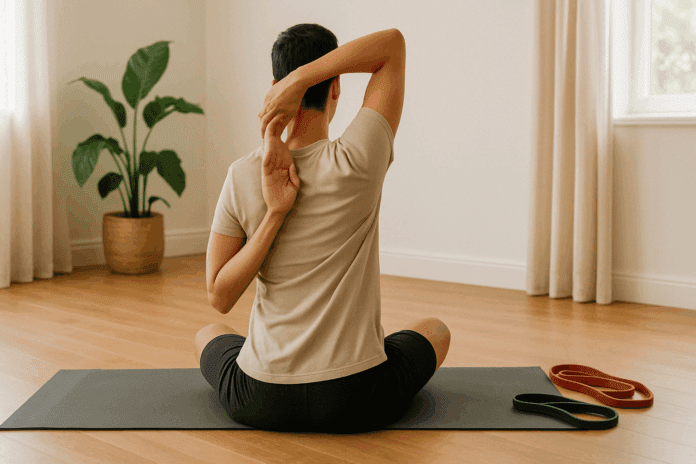In today’s increasingly sedentary world, more individuals than ever are grappling with stiffness, pain, and reduced mobility in their upper bodies. From the long hours spent hunched over computers to the chronic stress that subtly tightens the neck and shoulders, our modern lifestyles contribute significantly to arm and shoulder tension. While many seek relief through massage or medications, experts in kinesiology, physical therapy, and sports science emphasize that consistent movement—especially through targeted stretching and strengthening—offers the most sustainable, natural solution. By incorporating specific arm and shoulder exercises into your regular routine, you can gradually increase flexibility, reduce muscular imbalances, and lower shoulder tension in ways that benefit your long-term musculoskeletal health.
You may also like : Best Stretches for Sore Legs and Tight Thigh Muscles: How to Relieve Upper Leg Pain Safely and Naturally

Understanding Arm and Shoulder Tension: Causes and Consequences
Before exploring effective solutions, it is vital to understand the underlying mechanisms that lead to arm and shoulder discomfort. Muscles around the shoulder joint, including the deltoids, rotator cuff group, trapezius, and pectorals, often become tight or overactive due to poor posture, repetitive movement, or emotional stress. The arm and shoulder region is particularly vulnerable because it bears the dual burden of facilitating both gross motor activity (such as lifting) and fine motor control (such as typing or writing). When these muscles are subjected to chronic tension, circulation can decrease, connective tissues can stiffen, and movement patterns can become dysfunctional.
The consequences of persistent upper body tension are not limited to mild discomfort. Over time, individuals may develop chronic pain conditions such as thoracic outlet syndrome, frozen shoulder, or rotator cuff injuries. Furthermore, restricted range of motion in the shoulder girdle can negatively impact breathing, posture, and even sleep quality. A lack of flexibility in this region may also affect athletic performance and daily functioning. Therefore, adopting a proactive strategy through regular arm and shoulder exercises is a medically sound and evidence-based approach to addressing the root causes of muscular tension and supporting holistic health.
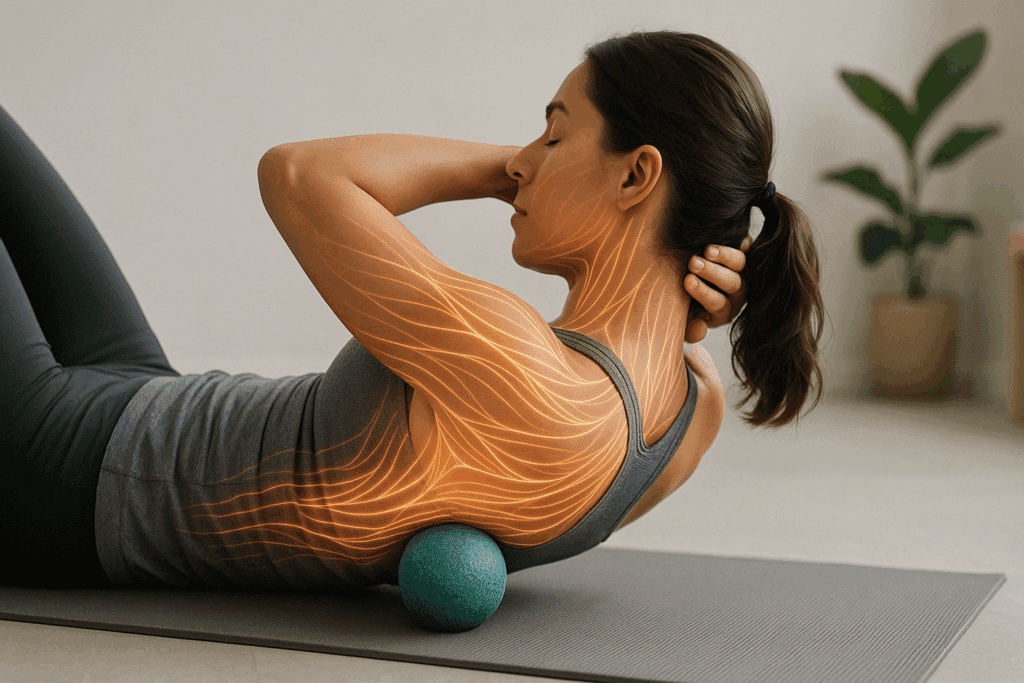
Fascia-Focused Techniques and Myofascial Release
One often overlooked aspect of shoulder and arm tightness lies in the fascia—the connective tissue that surrounds muscles, nerves, and organs. Fascia can become restricted due to trauma, repetitive strain, or prolonged inactivity, contributing significantly to the sensation of stiffness. Myofascial release, both through manual therapy and self-guided tools like foam rollers and massage balls, targets these fascial adhesions to improve range of motion and alleviate discomfort.
By slowly applying pressure to key areas such as the upper trapezius, pectorals, and subscapularis, individuals can encourage the fascial layers to glide more freely. This technique not only enhances the effectiveness of traditional arm and shoulder exercises but also helps break chronic tension cycles that stretching alone may not resolve. Incorporating five to ten minutes of myofascial release before or after a workout can significantly increase tissue pliability and promote better neuromuscular coordination.
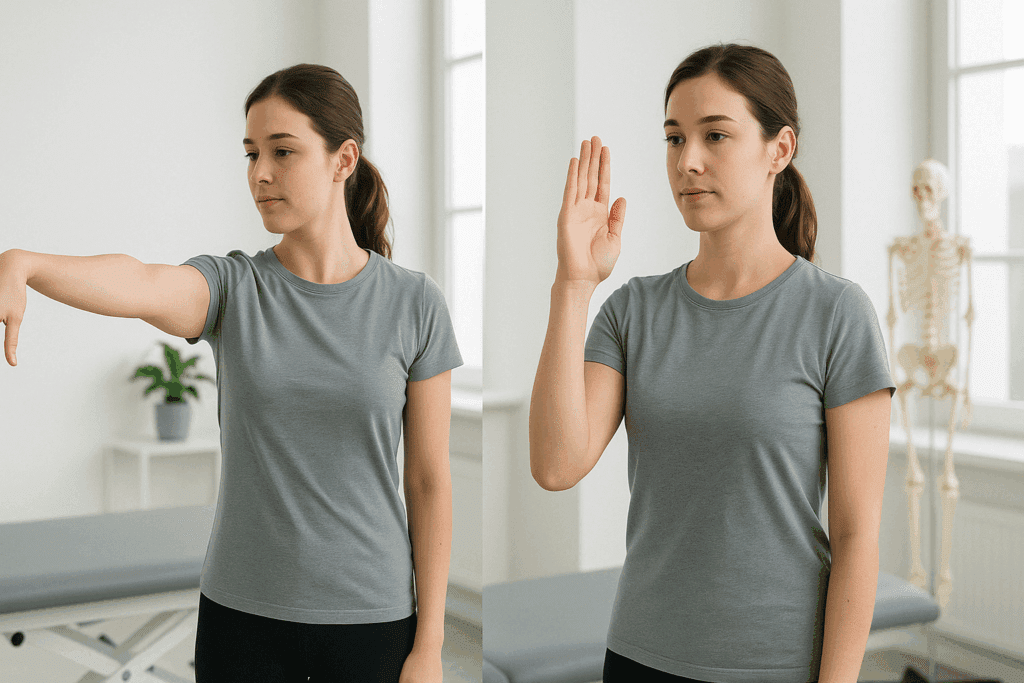
Neurodynamic Stretching and Nerve Flossing
While muscle tension is often the primary focus of flexibility work, neural structures can also contribute to perceived stiffness or discomfort in the upper body. Neurodynamic techniques, also known as nerve flossing, involve gentle, rhythmic movements that mobilize the peripheral nerves and reduce tension within their connective sheaths. The median, radial, and ulnar nerves—which traverse the arm and shoulder region—can become sensitized by inflammation or mechanical compression.
Simple flossing movements, such as the “median nerve glide,” involve wrist extension, elbow straightening, and shoulder abduction in a controlled sequence. These exercises stimulate the nervous system without overstretching the muscles, helping to restore normal sensory and motor function. Although often used in rehabilitation settings, nerve flossing is equally valuable for proactive care, especially for individuals experiencing unexplained tingling, radiating discomfort, or tightness that does not respond to traditional stretching.
Hydration and Fascia Elasticity
Closely tied to nutrition is the issue of hydration, which directly affects the pliability of connective tissues. Fascia and muscle fibers rely on adequate water content to maintain elasticity and slide effectively against one another. Dehydration can lead to increased stiffness, reduced shock absorption, and a heightened risk of soft tissue injuries, particularly in the shoulder girdle where mobility demands are high.
Ensuring consistent hydration throughout the day—especially before and after physical activity—is a simple yet often neglected strategy to lower shoulder tension. For individuals engaged in regular mobility work or strength training, electrolyte balance is also key. Sodium, potassium, and calcium all contribute to optimal muscle contraction and nerve signaling, highlighting the importance of not only water intake but also the quality of hydration.
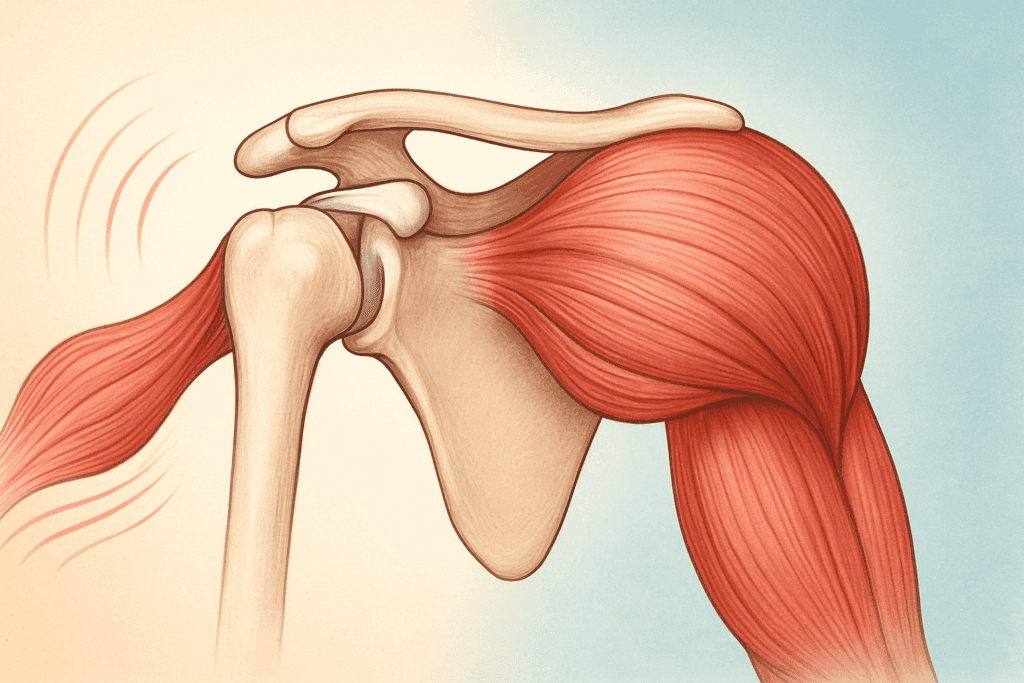
Why Flexibility and Strength Matter for the Upper Body
Flexibility and strength are not opposing goals but complementary aspects of functional fitness. In the case of the arm and shoulder complex, improved flexibility allows muscles and tendons to lengthen without restriction, which in turn promotes more efficient and pain-free movement. Strength, on the other hand, is essential for stabilizing the shoulder joint and maintaining alignment during both dynamic and static activities. Weak muscles around the scapula and upper back can cause compensatory movement patterns that exacerbate tension rather than relieve it.
According to Dr. Stacey Pierce, a certified physical therapist and mobility specialist, “Clients often come in with chronic shoulder tension assuming they need to stretch more, when in fact, their postural muscles are too weak to support proper alignment. Flexibility without strength is like having a wide range of motion without control—a recipe for injury.” Therefore, the most effective arm and shoulder exercises to lower shoulder tension incorporate both dynamic and static stretches along with progressive strengthening routines. These combined elements not only alleviate existing discomfort but also prevent future dysfunction by encouraging balanced muscular engagement.
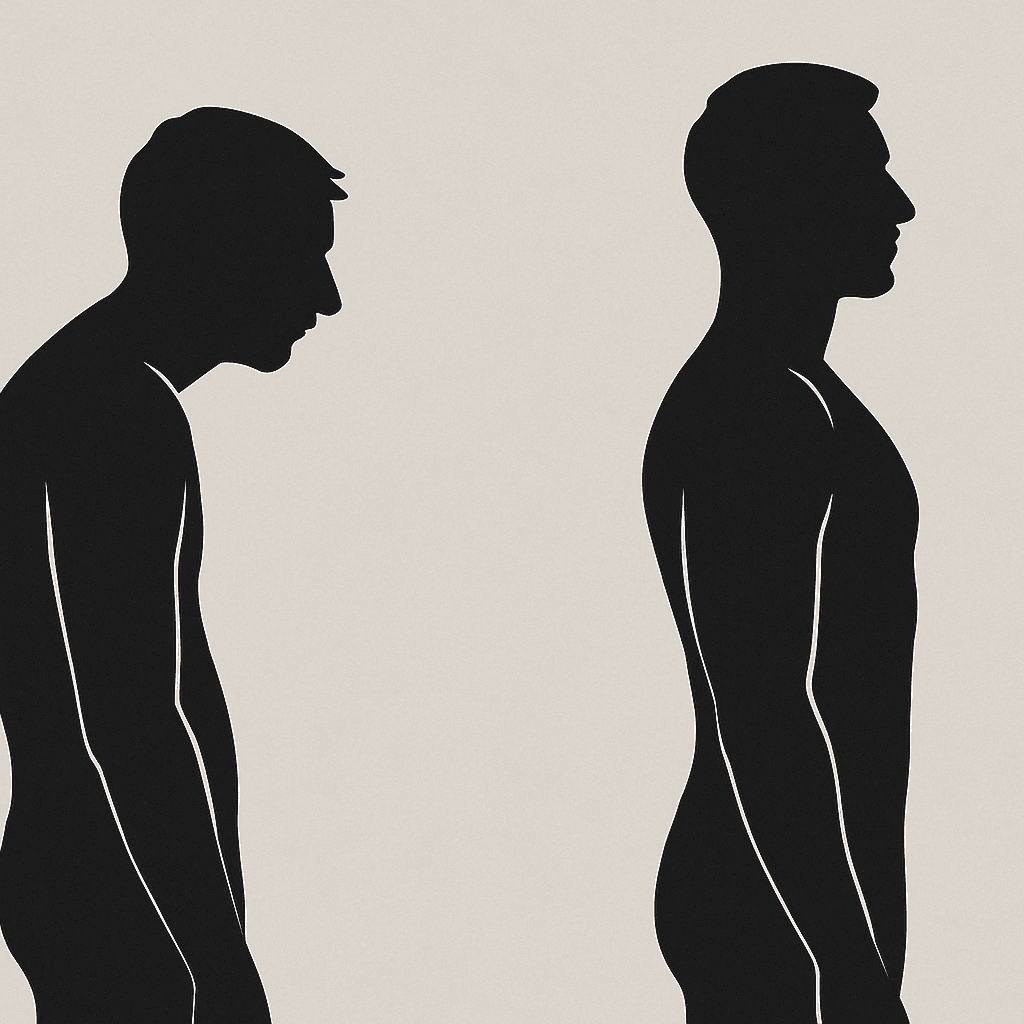
The Role of Posture in Shoulder and Arm Flexibility
Posture is a foundational element in any conversation about musculoskeletal health, particularly when it concerns the arm and shoulder region. Poor posture—characterized by rounded shoulders, forward head position, and slouched thoracic spine—places undue strain on the shoulder complex. This biomechanical imbalance causes muscles such as the pectoralis minor and upper trapezius to become overactive, while stabilizers like the lower trapezius, rhomboids, and deep neck flexors weaken over time.
As a result, the arm and shoulder muscles become locked in a dysfunctional pattern, where tightness and weakness reinforce each other. Correcting posture through specific stretching and strengthening exercises can break this cycle. For instance, chin tucks, wall angels, and thoracic extension movements help retrain the body to adopt more neutral alignment. Over time, these changes reduce the chronic tension that accumulates around the shoulder girdle and promote lasting flexibility. Experts agree that improving posture is not merely an aesthetic goal but a key medical intervention for reducing biomechanical stress and restoring muscular balance.
The Role of Proprioception in Shoulder Mobility
Proprioception, or the body’s ability to sense its position in space, is an essential but often undertrained component of shoulder flexibility. Proprioceptors located in muscles, joints, and tendons provide constant feedback to the nervous system about joint angle and movement quality. When proprioception is impaired due to injury, inactivity, or poor posture, motor control can decline, leading to compensatory patterns that increase tension and limit mobility.
Balance and stability drills, such as performing arm movements on unstable surfaces or using closed-eye exercises, help retrain proprioceptive pathways and restore functional control. Tools like wobble boards, resistance bands, or even soft foam pads can introduce a degree of instability that challenges the shoulder stabilizers and encourages neuromuscular refinement. Enhanced proprioceptive awareness not only improves the execution of arm and shoulder exercises but also reduces the likelihood of overuse injuries.
Cold and Heat Therapy for Recovery and Flexibility
Temperature-based therapies offer another layer of support for arm and shoulder health. Cold therapy (cryotherapy) is effective in reducing inflammation and numbing acute pain following intense exercise or injury. Conversely, heat therapy encourages blood flow, loosens stiff tissues, and promotes relaxation, making it particularly useful before stretching routines or on rest days.
Contrast therapy, which alternates between hot and cold exposure, has been shown to reduce delayed-onset muscle soreness and enhance lymphatic drainage. This technique can be applied through contrast showers or using hot/cold packs in succession. By strategically incorporating thermal therapies into a weekly mobility regimen, individuals can optimize recovery timelines and enhance the outcomes of their arm and shoulder exercises.
Dynamic Warm-Ups to Prepare the Upper Body
A safe and effective flexibility routine for the arm and shoulder should begin with a dynamic warm-up. Unlike static stretches, which are best reserved for the cooldown phase, dynamic warm-ups involve controlled, active movements that prepare the muscles and joints for more intense activity. This process increases blood flow, raises muscle temperature, and primes the nervous system for better movement control.
Arm circles, shoulder rolls, and band pull-aparts are simple yet effective dynamic exercises that engage multiple muscle groups simultaneously. These movements help loosen the soft tissue surrounding the shoulder joint while activating stabilizing muscles like the serratus anterior and rotator cuff. Including dynamic movements at the beginning of your workout can significantly lower the risk of strain and improve the effectiveness of subsequent stretching routines. In addition, dynamic exercises help identify areas of stiffness that may require additional attention, allowing for a more individualized and targeted mobility practice.
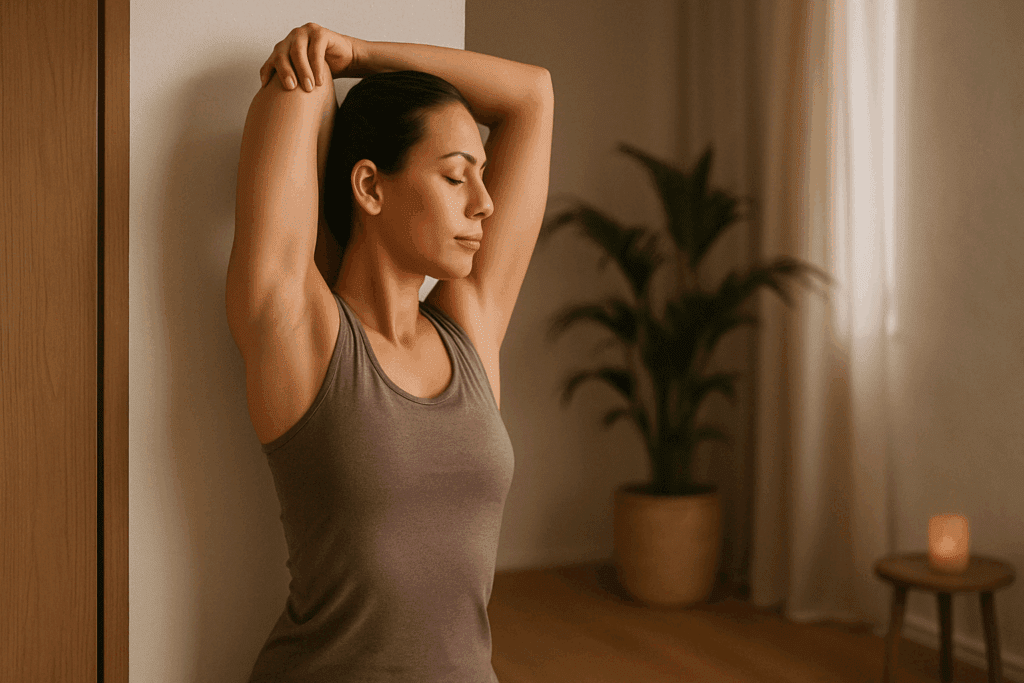
Static Stretching for Deep Tissue Release
Once the body is properly warmed up, static stretching can offer a deeper, more sustained release of tight muscles and connective tissues. Unlike quick movements, static stretches are held for 30 seconds to two minutes, allowing the muscle fibers to gradually elongate and the nervous system to recalibrate its response to tension. This is particularly effective for the arm and shoulder region, where habitual tightness can create lingering discomfort and limited mobility.
One of the most effective static stretches is the doorway chest opener, which targets the pectoral muscles and encourages the shoulder blades to retract. Similarly, the cross-body shoulder stretch and overhead triceps stretch target the posterior deltoids and triceps, both of which often harbor latent tension. When performed consistently, these stretches contribute to lasting improvements in range of motion and help lower shoulder tension by releasing areas of chronic tightness. Experts emphasize that static stretching should never be painful—rather, it should elicit a gentle sensation of elongation that gradually eases as the tissue adapts.
Strength Training to Stabilize the Shoulder Girdle
While stretching improves flexibility, strength training is essential for reinforcing joint stability and correcting muscular imbalances. The shoulder is a highly mobile joint, but this mobility comes at the cost of reduced inherent stability. Targeted resistance exercises can help build the strength necessary to support this complex structure through a full range of motion.
Key exercises include rows, external rotations, and reverse flys, which target the posterior chain and help counteract the forward-pulling force of tight anterior muscles. Resistance bands and light dumbbells are excellent tools for these movements, allowing for progressive overload without risking joint strain. Incorporating unilateral movements, such as single-arm presses and lateral raises, further enhances neuromuscular control and identifies asymmetries between the left and right sides. By emphasizing proper form and gradual progression, individuals can lower shoulder tension while building functional strength that supports posture and injury prevention.
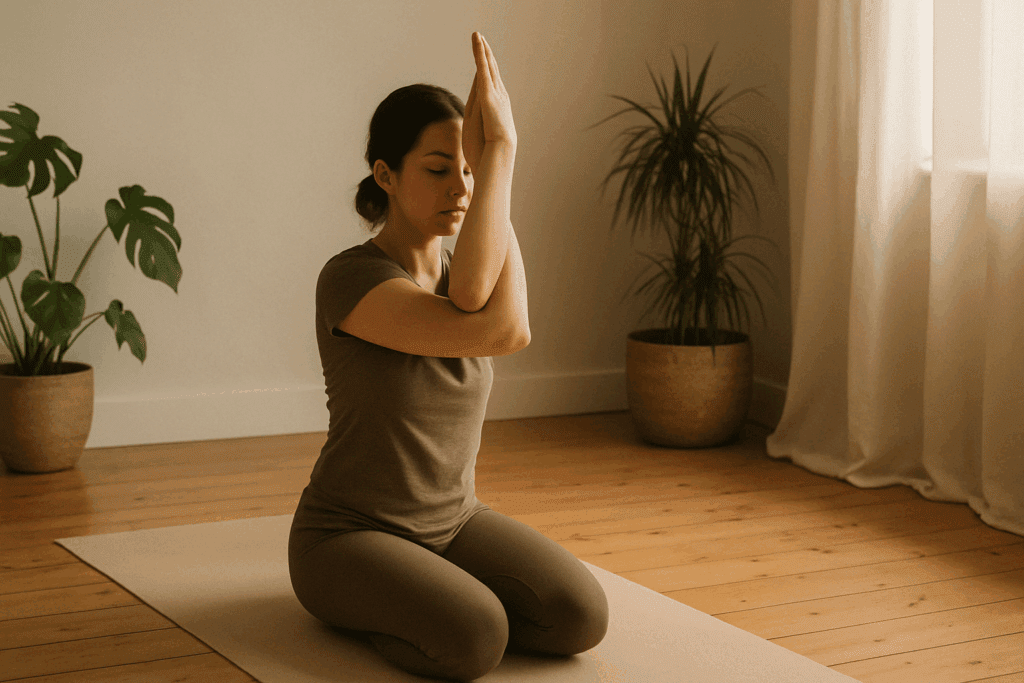
Yoga and Mobility Practices for Arm and Shoulder Health
Yoga offers a holistic approach to arm and shoulder care, blending dynamic movement, static holds, and breath awareness into a single practice. Poses such as downward dog, thread-the-needle, and eagle arms are particularly beneficial for increasing shoulder flexibility and promoting spinal alignment. These postures encourage the scapula to move through its full range of motion while lengthening commonly tight muscles like the lats, traps, and rhomboids.
Moreover, the mindfulness element of yoga plays a significant role in reducing stress-induced muscular tension. Chronic stress is a well-documented contributor to neck and shoulder tightness, often manifesting as clenched jaws and elevated scapula. Through focused breathing and intentional movement, yoga helps modulate the autonomic nervous system, shifting the body out of a fight-or-flight state and into a more restorative mode. This systemic effect lowers shoulder tension not just physically but neurologically, reinforcing the idea that mind and body practices are essential components of any effective upper body routine.
Breathing and Core Engagement for Shoulder Support
Many individuals are surprised to learn that breathing patterns and core strength directly affect shoulder function. Dysfunctional breathing—often characterized by shallow chest inhalations—places additional load on the accessory muscles of respiration, such as the upper trapezius and scalenes. Over time, this can contribute to tension and pain in the upper body, especially if combined with weak abdominal engagement.
Corrective strategies include diaphragmatic breathing and core activation exercises, which retrain the body to distribute effort more evenly. For example, crocodile breathing and supine belly breaths teach the diaphragm to initiate respiration, thereby relieving the shoulders of unnecessary tension. Similarly, planks and bird-dog exercises strengthen the core, which serves as the foundation for all upper body movement. Experts agree that addressing these foundational elements creates a more stable platform for arm and shoulder mobility, ultimately supporting long-term reductions in tension and strain.
Ergonomics and Lifestyle Adjustments to Prevent Recurrence
While exercise is crucial for resolving existing issues, it is equally important to address the environmental and behavioral factors that contribute to chronic tension. Ergonomic interventions—such as adjusting chair height, monitor placement, and keyboard angle—can significantly reduce repetitive strain on the arm and shoulder muscles. Ideally, the shoulders should remain relaxed and level when typing, with the elbows positioned at a 90-degree angle.
In addition to workstation modifications, it is beneficial to integrate movement into daily routines. Simple habits such as standing up every 30 minutes, performing shoulder rolls during phone calls, or taking short stretching breaks can prevent the accumulation of tension. For individuals with physically demanding jobs, wearing supportive gear and using proper lifting mechanics are also key strategies for preserving shoulder health. Ultimately, the goal is to create a lifestyle environment that supports, rather than sabotages, your efforts to lower shoulder tension through exercise.
When to Seek Professional Guidance
Although most cases of arm and shoulder tightness respond well to self-guided exercise routines, there are times when professional intervention is warranted. Persistent pain, limited range of motion, or neurological symptoms such as tingling and numbness should be evaluated by a licensed healthcare provider. A physical therapist can conduct a comprehensive assessment, identify underlying movement dysfunctions, and design a personalized program to address your specific needs.
Furthermore, individuals recovering from surgery or managing chronic conditions like arthritis or bursitis require a modified approach that balances progress with safety. In these cases, customized arm and shoulder exercises ensure that flexibility is restored without compromising structural integrity. It is always better to err on the side of caution and consult an expert when uncertainty arises, particularly if previous attempts at self-treatment have not yielded results.
The Social and Behavioral Dimensions of Movement Adherence
While physical strategies dominate discussions on flexibility, behavioral psychology plays a pivotal role in determining whether individuals stick to their routines. Adherence is often influenced by factors such as social support, environmental cues, and personal identity. Building a sustainable arm and shoulder routine requires more than just knowledge—it requires structure, accountability, and emotional investment.
Group classes, virtual mobility challenges, or even informal partnerships can help reinforce consistency through social connection. Habit-stacking techniques—such as pairing mobility exercises with existing routines like brushing teeth or winding down before bed—can also improve adherence. The most effective interventions are those that integrate smoothly into daily life, reducing friction and increasing the likelihood of long-term success.
Frequently Asked Questions: Advanced Insights into Arm and Shoulder Exercises and Tension Relief
1. Can emotional stress truly cause physical arm and shoulder tension, and how should I address it?
Absolutely. Chronic emotional stress triggers the sympathetic nervous system, leading to sustained muscle contraction, especially in the neck, traps, and upper back. This phenomenon often manifests in unconscious postural habits, such as elevated shoulders or clenched fists, which intensify arm and shoulder discomfort. To lower shoulder tension driven by stress, consider integrating somatic therapy, breathwork, or progressive muscle relaxation into your routine. These mind-body approaches complement physical arm and shoulder exercises by targeting the neurological root of tension, not just the muscular symptoms.
2. How do breathing mechanics influence shoulder mobility?
Breathing patterns play a profound role in upper body tension. Shallow, chest-dominant breathing tends to recruit the accessory respiratory muscles—like the upper traps and scalenes—leading to overuse and tightness in the arm and shoulder region. Diaphragmatic breathing, however, activates the core and stabilizes the rib cage, indirectly reducing unnecessary shoulder strain. Pairing deep breathing with mobility drills creates more fluid, stable movement and helps lower shoulder tension holistically. A consistent breathwork practice can enhance the benefits of arm and shoulder exercises by improving neuromuscular coordination.
3. Are there benefits to training grip strength as part of an arm and shoulder wellness plan?
Yes, and it’s a vastly underrated strategy. Grip strength is neurologically linked to shoulder stabilization via fascial chains and muscular co-contraction. When you strengthen your grip through controlled hangs, farmer’s carries, or resistance squeezes, you also engage the rotator cuff and scapular stabilizers. This coordination builds resilience in the entire arm and shoulder complex and can help lower shoulder tension by reinforcing muscular balance. Moreover, improving grip strength supports better execution of compound arm and shoulder exercises like rows and presses.
4. What role does hydration play in maintaining upper body mobility?
Hydration is foundational for muscle elasticity, joint lubrication, and overall tissue pliability. Dehydrated fascia becomes sticky and restricted, contributing to that “locked” feeling many experience in the arm and shoulder region. Proper hydration improves the glide between fascial layers, allowing smoother, pain-free movement during both stretching and strengthening routines. To lower shoulder tension, aim for steady hydration throughout the day—especially before and after workouts that focus on the upper body. Electrolyte-rich fluids may be particularly helpful when training in warm environments or during high-rep arm and shoulder exercises.
5. Can wearable tech help me track and improve arm and shoulder function?
Definitely. Advances in wearable technology now offer posture-correcting devices, EMG sensors, and movement trackers specifically designed to enhance body awareness. These tools provide real-time feedback on shoulder positioning, joint angles, and muscular engagement, enabling you to refine your form and prevent overcompensation. For instance, smart resistance bands track the velocity and range of motion during arm and shoulder exercises, helping you correct inefficiencies before they lead to discomfort. Used wisely, wearables can promote adherence, precision, and better long-term outcomes in any program designed to lower shoulder strain.
6. What are some overlooked sleep-related causes of arm and shoulder tightness?
Sleep posture plays a major yet underestimated role in muscular tension. Side sleeping with the arm pinned beneath the head or shoulder can cause sustained compression and blood flow restriction, leading to stiffness or even impingement over time. A pillow that doesn’t adequately support the neck or a mattress that lacks shoulder-friendly cushioning can exacerbate this problem. To lower shoulder tension, prioritize spinal alignment during sleep and consider using body pillows to distribute pressure more evenly. Creating a shoulder-supportive sleep environment complements your daytime arm and shoulder exercises by ensuring recovery isn’t compromised overnight.
7. How can nerve mobility exercises benefit my upper body flexibility?
Neural structures, just like muscles and fascia, can become restricted due to chronic tension, poor posture, or inflammation. Techniques like nerve flossing—where you gently glide nerves through their anatomical pathways—are particularly effective for relieving deep, radiating arm and shoulder discomfort. Unlike traditional static stretches, these exercises target mobility within the nervous system itself, which can restore function and alleviate persistent tightness. Nerve gliding is especially helpful for people experiencing numbness or tingling that hasn’t resolved with standard arm and shoulder exercises. Always perform these movements under guidance to avoid over-irritating sensitive tissues.
8. Are there any seasonal or environmental factors that worsen arm and shoulder tightness?
Yes, colder weather can significantly increase baseline muscle tone and reduce circulation to the extremities, making the arm and shoulder area feel tighter. Wind and damp conditions may also contribute to perceived stiffness by triggering reflexive guarding in the trapezius and neck. During winter months, it’s crucial to warm up more thoroughly before engaging in arm and shoulder exercises. Wearing thermal layers and using heated mobility tools, such as warming gels or heated massage balls, can further help lower shoulder tension when the environment is working against you.
9. How can I make arm and shoulder training more sustainable long-term?
Sustainability comes from variety, personalization, and purpose. Rather than repeating the same set of stretches or strength moves, cycle your routine every few weeks to stimulate new adaptations and avoid overuse. Align your arm and shoulder exercises with functional goals—like improving overhead reach, posture endurance, or lifting mechanics—to keep your efforts meaningful. Integrate low-load recovery sessions such as mobility flows or light resistance band work to balance intensity with restoration. These practices not only help lower shoulder tension but also prevent stagnation, making it more likely you’ll stay consistent over the long haul.
10. Can creative or artistic hobbies affect shoulder health?
Absolutely, especially those involving repetitive fine motor tasks. Activities like painting, playing a musical instrument, or even digital art creation often require prolonged, precise arm positioning that taxes the shoulder stabilizers and forearm extensors. While these hobbies are mentally enriching, they can lead to chronic micro-tension in the arm and shoulder area if not counterbalanced by mobility or strengthening routines. If you spend hours engaged in such tasks, consider scheduling regular movement breaks or embedding brief arm and shoulder exercises into your creative workflow. Ergonomic adjustments to your setup can also make a significant difference in lowering shoulder fatigue over time.
Conclusion : Integrating Arm and Shoulder Exercises for Long-Term Flexibility and Pain Relief
Sustainable improvements in upper body health require more than occasional stretches or sporadic workouts. Consistency, awareness, and a multifaceted approach are essential for achieving meaningful change. By incorporating a balanced regimen of arm and shoulder exercises that address both flexibility and strength, individuals can lower shoulder tension and enhance their overall physical well-being.
Equally important is the recognition that movement is not a standalone solution. Posture, breathing, ergonomics, and stress management all play pivotal roles in the health of the arm and shoulder region. When these elements are aligned, the benefits extend beyond musculoskeletal comfort to include better sleep, improved energy levels, and greater resilience to injury. Experts across disciplines—from physical therapy to yoga instruction—agree that addressing the full spectrum of factors contributing to shoulder tension leads to superior outcomes.
Ultimately, the path to lasting flexibility and reduced tension is one of integration and intentionality. With informed choices and expert-backed strategies, you can transform your daily routine into a source of strength, mobility, and ease. Whether you are an athlete seeking peak performance or an office worker aiming for pain-free posture, the right arm and shoulder exercises can make a profound difference—not just in how you move, but in how you live.
Was this article helpful? Don’t let it stop with you. Share it right now with someone who needs to see it—whether it’s a friend, a colleague, or your whole network. And if staying ahead on this topic matters to you, subscribe to this publication for the most up-to-date information. You’ll get the latest insights delivered straight to you—no searching, no missing out.
Further Reading:
Top Exercises for Shoulder Strengthening and Flexibility

